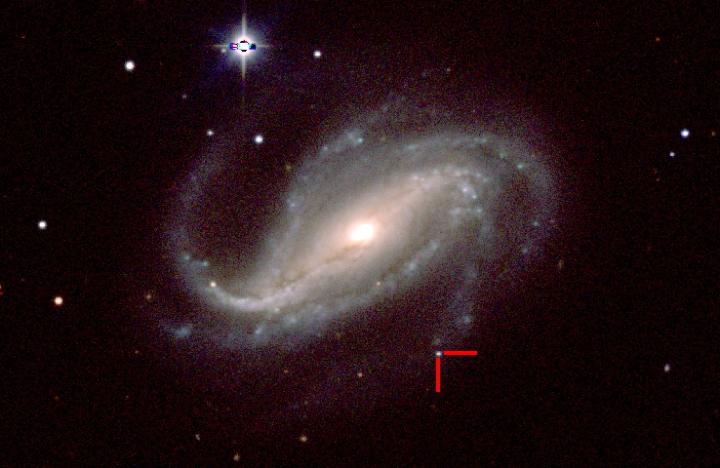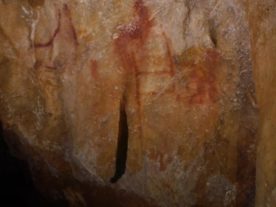An amateur astronomer strikes gold when, for the first time, he was able to image the initial burst of optical light produced by a supernova millions of light years from Earth.
Victor Buso of Rosario, Argentina is a locksmith by trade and a self-taught astronomer.

This is a sequence of combined images (negatives, so black corresponds to bright) obtained by Víctor Buso as SN 2016gkg appears and brightens in the outskirts of the spiral galaxy NGC 613. (V. BUSO, M. BERSTEN, ET AL.)
On September 20, 2016, Mr. Buso was trying out a new camera he had purchased for his 41 cm telescope.
To test his camera he took a sequence of photographs of a spiral galaxy located some 67 million light years in the constellation Sculptor.
The sequence included photos of the galaxy before and after the supernova’s “shock breakout”.
This is when a shock wave explodes from the star’s core and quickly produces a bright light.
The supernova has been named SN 2016gkg.
Details of Buso’s discovery and of follow-up observations by professional astronomers have been published by journal Nature.
























Look you, we amateur astronomers are earning the epithet ‘citizen scientists’ continually, for obvious reasons, such as the supernova discovery in NGC 613.
We find comets, asteroids and who knows what else lurking inside and outside the solar system. Our contributions on variables and discovering of, perchance, quasars at great distances (let’s wish not too close) I assume are, or ought to be, appreciated by the big boys! Personally, since I own nothing of substantial aperture, I can at least scan for comets in giant binoculars; my dream being one day finding one bearing my name. Same goes with asteroids, albeit I’m far outclassed by the observatories for that. But wishful thinking is healthy in my mind, anyway!
Hello Ezra!
I used the term ‘amateur astronomer’ rather than ‘citizen scientist’ because I thought the term was more specific to astronomy than science in general. It would be interesting to hear what other folks think of this too.
Thanks for posting!!!
To the World for the record The term AMATUER ASTONOMER is not meant to be DEGRADING,I for one wear that Title Proudly having in Mar 19 1997 photographed comet Hale-Bopp at Barkhampstead Reservoir CT with best friend Willey Demery, my analog film Nikon N2000 with its Nikor 52mm lens a tripod an a 50 second exposure to what my Brother Marian R Trojanowski calls a Million dollar shot,In 1997 digital photography was not widely used along with all of todays computer aided gimmicks, it was me my analog film Camera A COLD clear night and me and my friend who proudly call themselves AMATEUR ASTRONOMERS P.C. Needs to go EXTNCT take note Ezra-Two Eyes
What moderation?
Yes, Rick, upon further contemplation I think you are right. I only wish to be a real scientist in my backyard fantasies. Alas, I’m not. All that advanced camera equipment mentioned is out of reach for me, even used. And I believe I may be running out of time to learn it all, anyway. Suffice it to say that the amateurish pursuits of us 20×80 gazers are quite sufficient for a remarkably fulfilling evening, and simply catching glispses of faraway galaxies, wondering as I do, if something may be looking back, is quite a thrill enough for me.
To what do you wish me to take note, Joseph? By ‘EXTNCT’, do you mean ‘extinct, ‘extant’ or whatever? Also, I’m afraid I miss your point, so can you put it another way, please? I live in a world of concretism, so if I take things too literally, I apologise.
Also, is there any way you can attach that ‘Million dollar’ shot, because I subscribe to ‘S&T’ and ‘Astronomy’ not only for the articles but equally to the photographs.
Oh, I believe by ‘moderation’ they mean ‘consideration’; or modify as in change to more fitting substance in a forum-like communication…